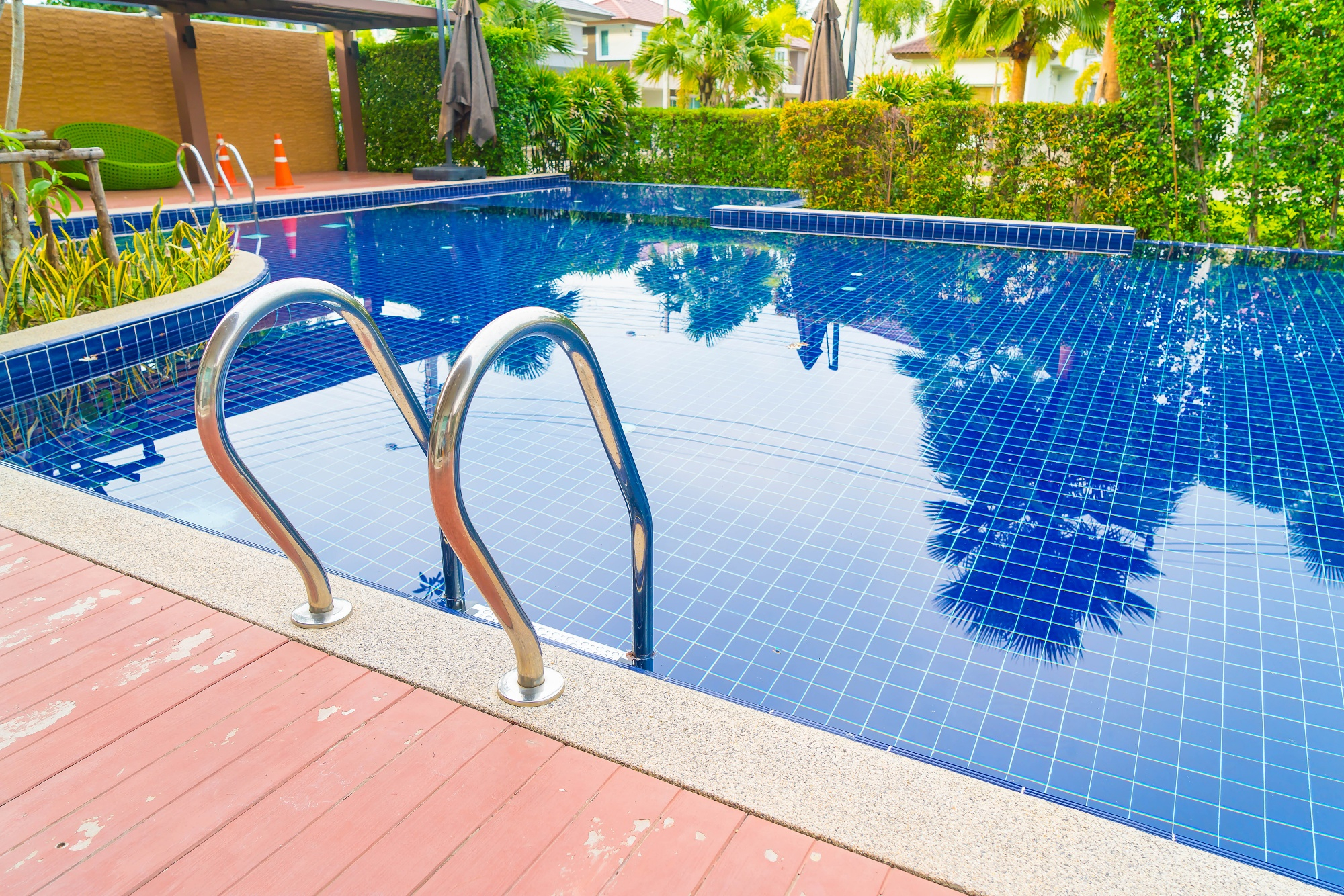
1. Sustainable Pool Designs
Environmental consciousness is at the forefront of modern pool design. Homeowners are increasingly seeking eco-friendly solutions that minimize resource consumption while maintaining aesthetic appeal.
Energy-Efficient Systems
- Variable-Speed Pumps: These pumps adjust their speed to match the pool’s needs, reducing energy usage and operational costs.
- Solar Heating: Harnessing solar energy to heat pool water offers a sustainable alternative to traditional heating methods.
Water Conservation Features
- Rainwater Harvesting: Integrating systems that collect and utilize rainwater for pool replenishment helps conserve municipal water supplies.
- Automatic Covers: These covers reduce evaporation, maintaining water levels and reducing the need for frequent top-ups.
Implementing these sustainable practices not only benefits the environment but also leads to long-term cost savings for homeowners.
2. Smart Pool Technology
The integration of smart technology into pool management is transforming the user experience, offering convenience and enhanced control.
Automated Maintenance
- Robotic Cleaners: These devices autonomously clean the pool’s surface and walls, ensuring consistent cleanliness with minimal manual intervention.
- Chemical Monitoring Systems: Smart sensors monitor water chemistry in real-time, automatically adjusting chemical levels to maintain optimal balance.
Remote Operation
- Mobile Apps: Homeowners can control lighting, temperature, and filtration systems remotely, customizing their pool environment from anywhere.
Embracing smart technology simplifies pool maintenance and enhances the overall swimming experience.
3. Naturalistic Pool Aesthetics
There’s a growing trend towards designs that mimic natural bodies of water, creating serene backyard retreats.
Organic Shapes and Materials
- Freeform Layouts: Pools with irregular shapes blend seamlessly into the landscape, offering a more organic appearance.
- Natural Stone Decking: Using materials like flagstone or travertine enhances the pool’s integration with its surroundings.
Vegetative Integration
- Aquatic Plants: Incorporating plants that thrive in water adds to the natural feel and can assist in maintaining water quality.
- Living Walls: Vertical gardens adjacent to the pool area contribute to a lush, immersive environment.
These elements create a tranquil oasis that harmonizes with nature. Guncast
4. Multifunctional Outdoor Spaces
Modern pool designs are extending beyond swimming to encompass diverse outdoor activities, enhancing the utility of backyard spaces.
Integrated Entertainment Areas
- Outdoor Kitchens: Combining cooking facilities with poolside dining areas facilitates seamless entertaining.
- Fire Features: Fire pits or fireplaces provide warmth and ambiance, extending the usability of the pool area into cooler evenings.
Wellness Amenities
- In-Pool Lounges: Shallow areas equipped with submerged seating offer relaxation zones within the pool.
- Hydrotherapy Jets: Incorporating therapeutic jets transforms the pool into a space for physical rejuvenation.
Designing multifunctional spaces caters to diverse lifestyle needs, making the pool area a central hub for leisure and wellness.
5. Minimalist and Geometric Designs
Simplicity and clean lines continue to dominate pool aesthetics, aligning with contemporary architectural trends.
Rectilinear Shapes
- Geometric Pools: Straight edges and angular forms create a modern, sophisticated look that complements minimalist home designs.
Monochromatic Color Schemes
- Uniform Finishes: Using a limited color palette for tiles and decking materials enhances the sleek, uncluttered appearance.
This design approach emphasizes elegance through restraint, focusing on form and function.
By embracing these trends, homeowners can create pool environments that are not only visually stunning but also sustainable, functional, and in harmony with modern living.

